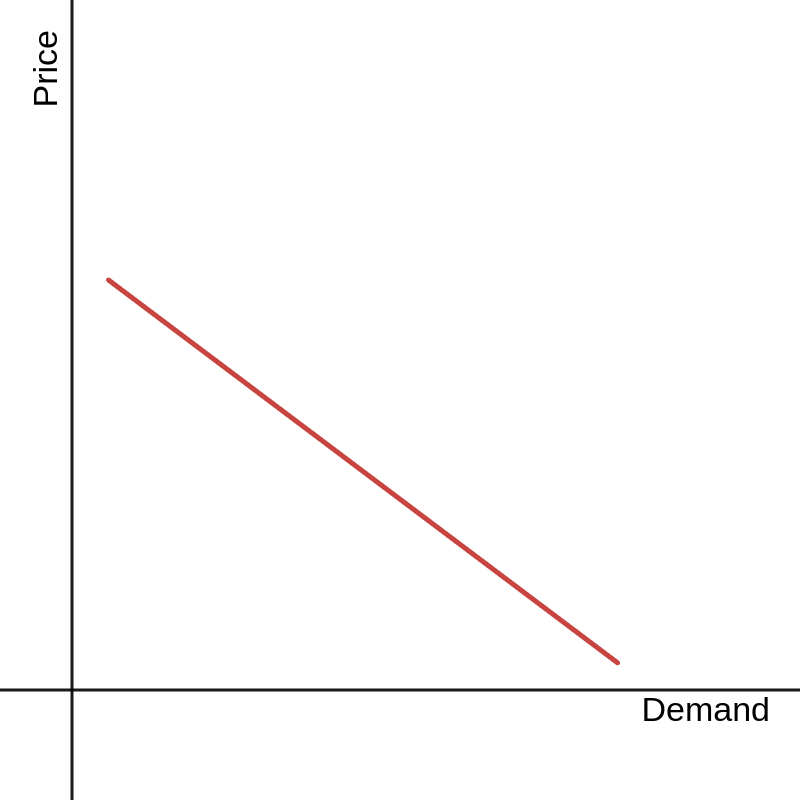Demand Curve
Simple Model
Demand for a good is modeled in terms of other structural factors, such as price of the good, prices of complementary goods, and individual income. This model can be fit with Econometrics/econometric methods.
A simple model describes demand (D) in terms of price (P): D = a + bP. This is an example of a demand curve.
Traditionally, the inverse demand curve is graphed instead; that is, price is conceptualized as the dependent variable. The curve is rewritten as P = (D - a)/b.
Interpretation
The above model graphs as:

A demand curve explains how a change in price for some good, holding all else constant, causes a change in demand for that same good. Such a change is called a movement along the curve.
If some other variable is allowed to vary, the demand curve itself changes. This is called a shift of the curve.
Law of Demand
Conventionally, it is assumed that price and demand are inversely related. In the simple model above, this would mean b < 0. In a multivariate model, the assumption looks like ∂D/∂P < 0.
The opposite case is called a Giffen good.
Elasticity
